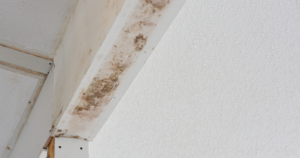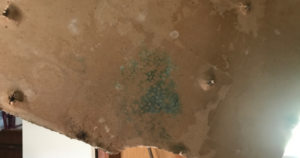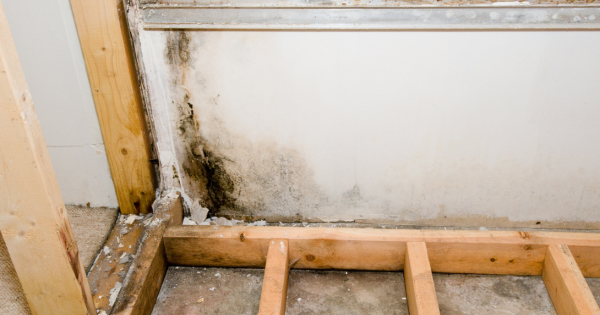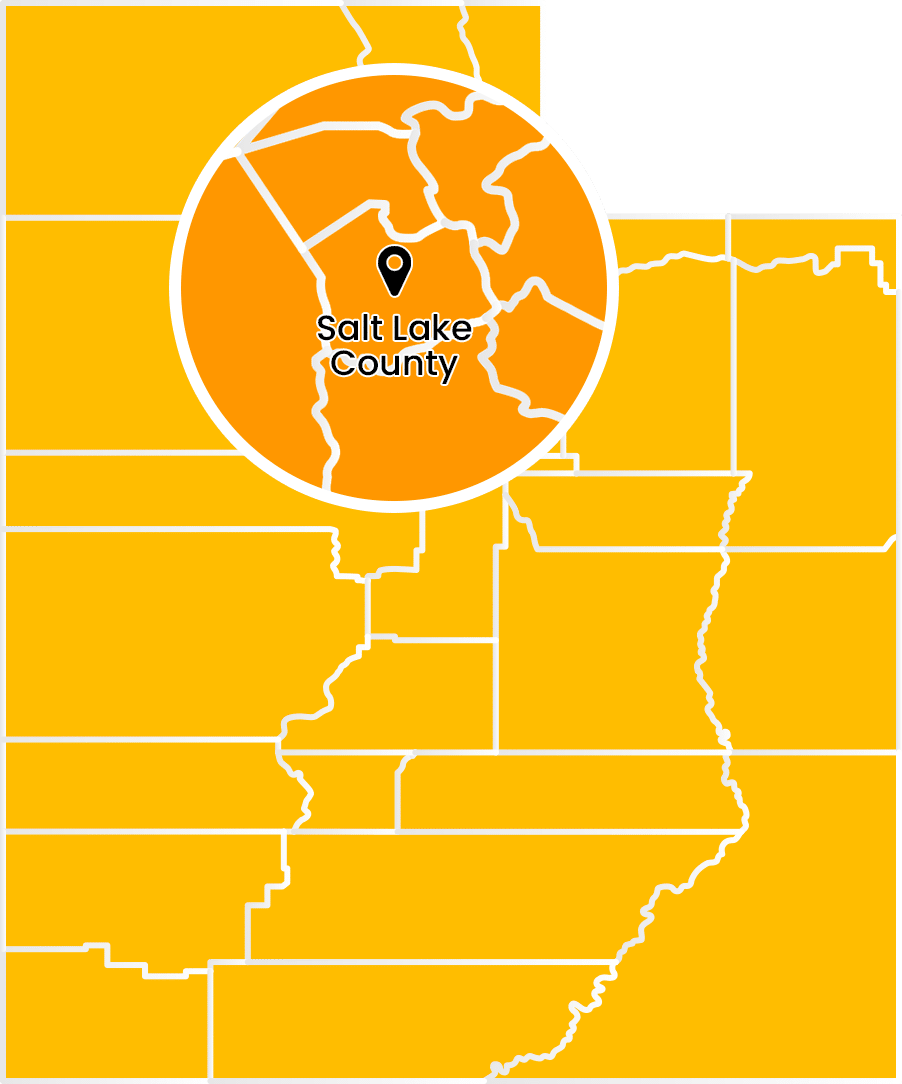Discovering mold on drywall in your home can be quite alarming. Not only does it look bad, but it also poses potential health risks and structural damage to your property. The key to removing it is to act promptly and efficiently. This article will guide you through the steps of drywall mold removal in Draper, UT, ensuring you are equipped with knowledge for effective drywall mold treatment.

Mold is not just an aesthetic nuisance; it could compromise your living environment’s healthiness. Understanding the gravity of mold issues, recognizing the warning signs, and knowing how to handle them can make all the difference when it comes to preserving your home.
Key Takeaways
- Quick action is crucial upon discovering the presence of mold on your drywall.
- Mold removal from drywall is a necessary step to mitigate health risks and potential property damage.
- Understanding the severity of mold issues is critical in maintaining a healthy living environment.
- Seeking professional help often ensures safe and efficient mold removal, especially for significant infestations.
- DIY methods can be an option for minor mold problems on drywall if done following recommended guidelines.
Identifying Mold on Your Drywall
Drywall is a common material in home construction because of its versatility and cost-effectiveness. However, it is prone to mold growth, typically visible as discoloration on the wall surface. Therefore, being able to recognize moldy drywall is an essential step in eliminating mold on drywall.
The Common Signs of Drywall Mold
When moisture interacts with drywall, mold can thrive. Common signs include stains, discoloration, or black, green, or fuzzy spots. A strong musty odor may also indicate the presence of mold. All these are very distinct signs, and spotting them early will give you a head start in the question of how do I kill mold on drywall.
Health Risks Associated with Mold Exposure
Mold exposure can cause a range of health issues, especially if you’re allergic to it or you have a respiratory condition. Symptoms can range from eye irritation and coughing to more severe reactions like difficulty breathing or asthma attacks. If you or any of your family members start experiencing these symptoms, it signifies the immediate need for drywall inspection and likely mold removal.
When to Call a Professional
If the moldy area is extensive or hard to access, a professional mold cleanup company might be necessary. Cleaning large areas of mold can be hazardous if not done correctly, as it can spread spores into the air, exacerbating health risks. A professional in mold removal will have the necessary equipment and expertise to eradicate mold safely and effectively.
How to Kill Mold on Drywall
Dealing with mold on your drywall is a common issue that many homeowners face. With the right approach, you can tackle diy mold removal to reclaim your abode’s healthiness. It’s essential to follow a concise approach that results in completely getting rid of mold on drywall. Let’s delve into the process of mold removal from drywall.

Cleaning mold from drywall requires precise and careful actions to guard against recurrence. Appropriate DIY mold removal solutions and techniques are of the essence in this quest. This method proves substantially effective, especially for minor mold coverage. However, it’s not a one-size-fits-all cure and might not be suitable for extensive infestations that necessitate professional intervention.
Steps | Description |
1. Inspect the Affected Areas | Identify and assess the mold extent on your drywall to understand the gravity of the situation. |
2. Equip Yourself with the Right Tools | Arm yourself with the necessary protection gear and solutions. Masks, gloves, and EPA-approved mold-killing agents are crucial. |
3. Apply the Cleaning Solution | Apply your chosen mold-killing solution on the affected areas and scrub gently yet thoroughly. |
4. Rinse and Dry | Once scrubbed, rinse the areas with clean water and ensure it dries thoroughly. |
5. Monitor Regularly | Check regularly for any mold reoccurrence and take proactive actions when necessary. |
Remember, while DIY mold removal can be effective, it’s also important to focus on preventative measures to limit future mold growth. Indeed, a clean, dry, and well-ventilated environment is less likely to support mold development. Therefore, by maintaining your home’s humidity levels, improving ventilation, and addressing leaks and dampness swiftly, you can go a long way in preventing mold growth.
DIY Mold Removal: Safety and Preparation
Addressing a mold issue doesn’t necessarily mean you need professional help. Sometimes, safe methods to remove mold from drywall can be employed right at home. However, safety should always be prioritized as the process can expose you to harmful mold spores. Let’s delve into how you can safely tackle this issue.
Gathering the Right Tools and Safety Gear
Mold can cause health problems, so having the right tools and safety gear is essential in protecting your health during the mold removal process. A comprehensive checklist can be quite helpful.
Item | Description |
N-95 Respirator | Specially designed facial mask to protect you from inhaling mold spores. |
Gloves | Long, non-latex, non-porous gloves to protect your skin during the cleaning process. |
Goggles | Goggles without ventilation holes to protect your eyes from mold spores. |
EPA-approved Mold Killing Agents | Chemicals or solutions are certified safe for killing mold effectively. |
Equipped with these tools and safety gear, you’re now ready to approach the task of mold removal from drywall.
Preparing the Affected Area
The next step to ensuring safe mold removal is preparing the affected area. The goal is to prevent mold spores from spreading to other areas of your home during the cleaning process. This can be achieved by sealing off the space. Use plastic sheets to cover doors and air vents. Also, move unaffected furniture out of the area to minimize contamination.
Proper preparation significantly reduces the risk of mold distribution, which is a crucial aspect of preventing mold growth on drywall. Treating the problem early with appropriate precautions can make a huge difference in preserving the health and cleanliness of your home.
The Step-by-Step Guide for Mold Remediation on Drywall
Unwanted mold growth on your drywall is a common menace. The key to winning the battle against mold lies in a comprehensive method of mold remediation for drywall. Let’s break it down into an easy-to-follow guide that will have your drywall spick and span in no time!
Containing the Work Area
Isolating the affected area is the first line of defense in the realm of mold remediation. Start by defining your workspace clearly to prevent the spores from contaminating the rest of the house. The most efficient way of achieving this is by using sturdy plastic sheeting. This measure confines the problematic mold, keeping your house safe from further invasive spores.
Cleaning and Treating Mold Spots
Once the area is secure, it’s time to wage war on the pesky mold. Armed with a tried and tested mold control spray, get to work on those mold spots. Ensure you have a thorough approach to cleaning each spot, guaranteeing no mold gets a second chance to bloom. Remember, perseverance is key when removing mold from drywall.
Drying and Repairing the Drywall
After the mold spots are cleaned and treated adequately, your drywall needs to be dried out completely. Use air movers or fans to help speed up the drying process. Any remaining moisture can encourage the growth of new mold colonies, so ensure the area is thoroughly dried out. Once you’re certain the area is dry, inspect the drywall for any damage. If any part of the drywall is compromised, you may need to repair or replace it to maintain the structural integrity of your walls.
This step-by-step guide on mold remediation should help you restore your drywall to its original mold-free state with confidence. Just remember, patience, thoroughness, and the right tools are your best allies in this mission!
Conclusion
Being vigilant and proactive are key in handling the issue of mold on drywall. Mold, once identified, should be addressed right away to maintain the healthiness of your indoor environment, considering its potential impact on the structure of your home and your well-being.
If you’re armed with the appropriate knowledge and resources, a DIY approach can effectively deal with small-scale mold issues. Knowing how to kill mold on drywall can empower homeowners to deal with this common issue efficiently and safely. Proper usage of EPA-approved mold killing agents, ensuring that the infested area is securely sealed off, and efficient cleaning are necessary measures in this process.
However, vast mold infestations should not be underestimated and professional assistance is highly recommended. Companies like Summit Restoration are experts in mold removal Draper UT, offering high-quality service right out of Draper UT and servicing the whole Salt Lake City area. You can reach them at (385) 469-2638 for assistance with your mold concerns or fill out their online contact form. Taking immediate action against mold can prevent further issues and ensure that your home remains a safe haven for you and your family.
FAQs
How can I recognize mold growth on my drywall? |
Mold is often noticeable via discoloration, a musty odor, or visible spore growth. If you observe such signs, it might suggest that there is a mold issue in your home that needs immediate attention. Another symptom could be an increase in allergies or respiratory conditions in the household. |
What is effective drywall mold treatment? |
Effective treatment is all about completely eliminating the mold from the affected drywall. This involves a thorough cleaning with EPA-approved mold-killing solutions, ensuring complete mold removal, drying the area, and repairing or replacing the damaged drywall. This can be done DIY if the infestation is not too severe; otherwise, professional services are recommended. |
How do I kill mold on drywall myself? |
For DIY mold removal, make sure you have the necessary protective gear and tools such as gloves, masks, and mold-killing agents. Begin by sealing off your workspace to prevent mold spores from spreading. Then, directly clean the mold spots with a mildicide, and treat the drywall surface to kill any residual mold. Dry the area thoroughly and repair any compromised drywall if needed. |
When should I call in a professional for mold removal? |
If the mold infestation is significant, or when the infestation persists despite your remediation efforts, it’s advisable to call in a professional mold remediation service like Summit Restoration in Draper, UT. Professionals possess the expertise and tools to handle extensive mold infestations effectively and safely. |
Is there a way to prevent mold growth on drywall? |
Yes. The best way to prevent mold on drywall is to control the humidity levels in your home and regularly check for water leaks or condensation. If you do notice mold, quickly take appropriate steps for cleaning, treating, and preventing another outbreak. |
What are safe methods to remove mold from drywall? |
Safe removal methods consist of using personal protective equipment (PPE) such as gloves and masks while handling the mold. Using EPA-approved mold-killing solutions is also advised. It’s vital to seal off the affected area during cleaning to prevent mold spores from spreading throughout your home. |






